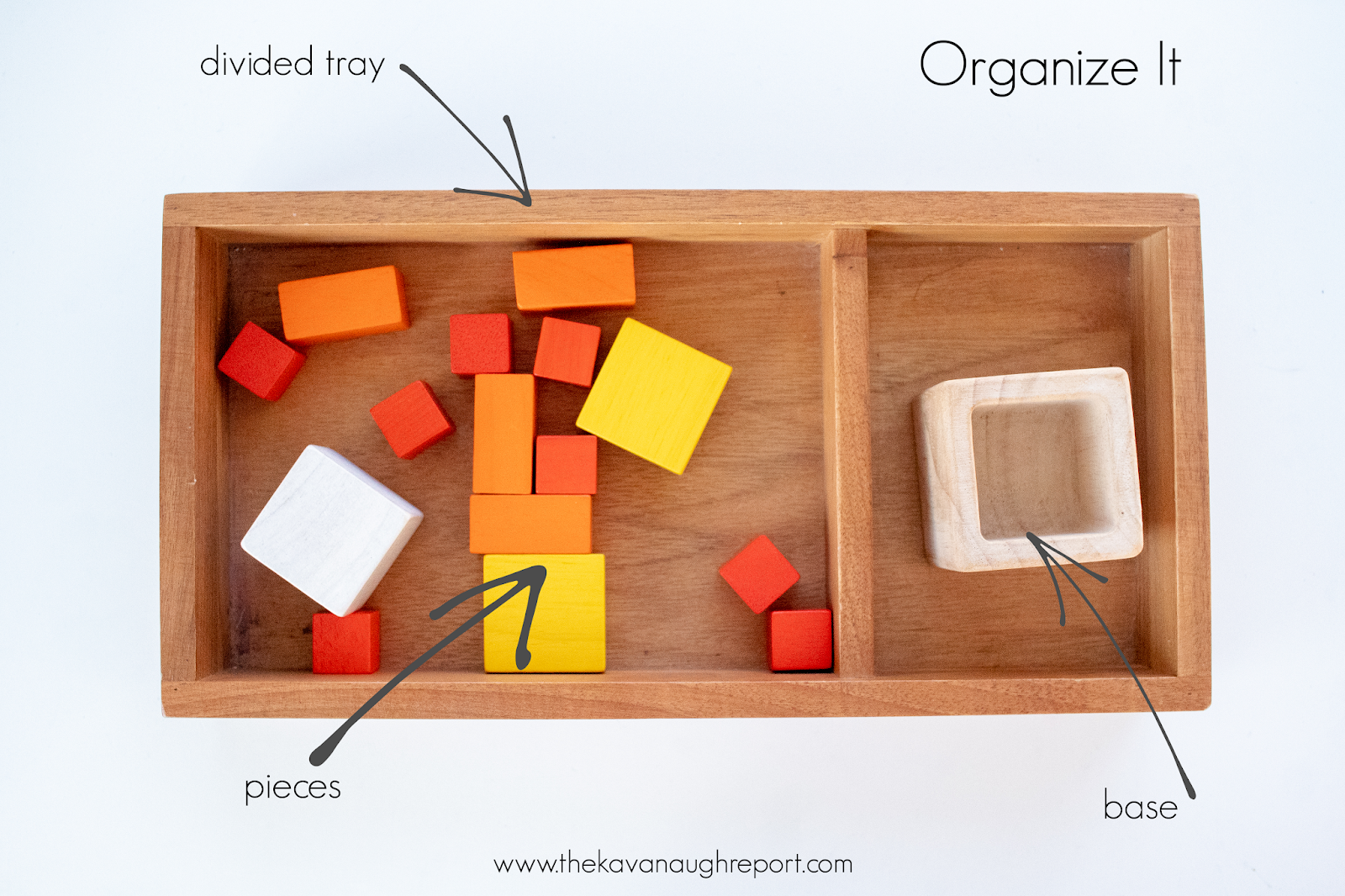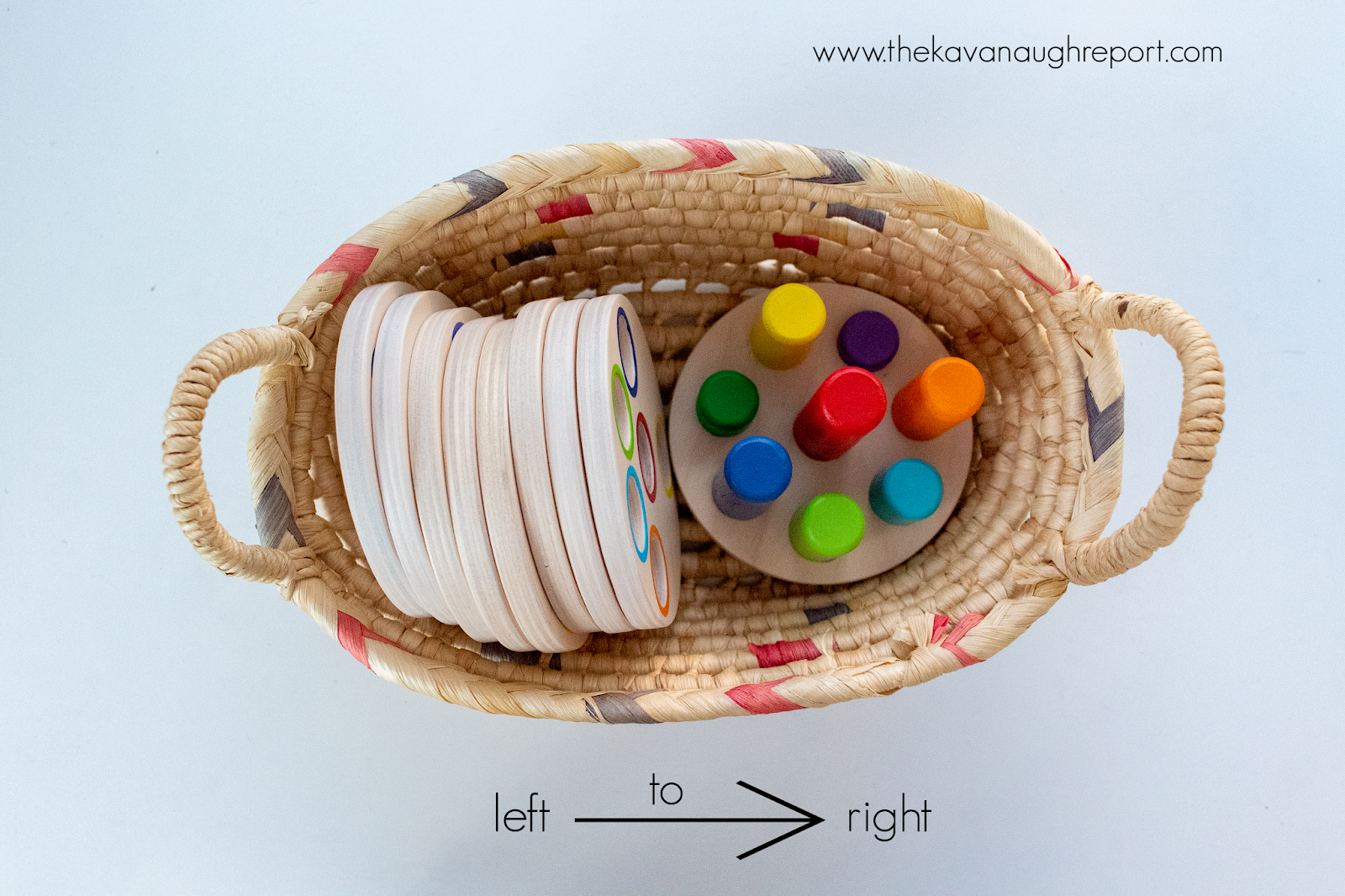Toys aren’t always designed and packaged to be the most convenient for children right out of the box. This can be frustrating as we strive to create our own Montessori prepared environment for our children. But it doesn’t have to be, a few simple adjustments are often all that is needed to make a toy accessible and ready for your Montessori space.
Before I get into the tips, just a friendly reminder that I’m talking about commonly available toys here, not traditional Montessori classroom materials.
This post contains affiliate links at no cost to you.
Create/keep a control
Control of error is an important part of a Montessori environment. If materials have a control for error, children are able to work more independently and don't need to depend on you to let them know if they have done work right or not. So when you're adapting a traditional toy, think about how you can add some sort of control. Can you add a picture of how the toy should look when completed? Or, make an example to keep with the toy? Whatever the control is, keep it close to the toy on the shelf so that a child can easily use the toy and control together.
In this example, I have organized the Pattern Play cards with the work, so that they can be accessed and provide some direction. For some toys, the control of error will be built in (it won't fit together any other way, for example) so you won't have to worry as much about this.
Organize it
Toys with pieces often don't come with any sort of apparent organization once you take them out of the box. But, keeping things in a box can make it hard for a young child to access the material. So, you need to add something to organize the toy for your child. This can be as simple as putting the toy in a basket, or using a tray. This way, a child can grab just one thing in order to use the toy instead of needing to gather everything or dig through a bin to find pieces.
Thrift stores, garage sales, craft stores, and dollar sections are often great places to find simple trays and baskets without adding a lot of cost to the toy. Bonus tip, where possible, organize your baskets or trays from left to right. So that pieces are being moved in that direction to complete the work. This is sneaky indirect preparation for your child when they start to read and write! They will get used to moving and working in that direction!
Toys shown are the Plan Toys Fraction Blocks and Constructive Playthings Stacking Puzzle both in thrifted basket/tray.
Place like things together
This is related to organizing, but place like things together! It seems simple, but again when things are scattered all over a playroom or house, it can be difficult for young toddlers to pull it all together. Instead, make play easy for them! Put those blocks together, put your animals together. If your child has a small collection of a particular item, keep them together in one spot.
It can sometimes help to further rotate based on an interest you see. Here, I've put together not just a basket of animals, but of big cats, a specific interest I've noticed in my child. A tiny change can help your child focus on the play he or she is most immediately drawn to.
Make it complete
Sometimes toys come without everything a child needs to actually use it. This is especially true with craft or art type toys. By adding anything your child needs to actually play with the toy, you are giving your child the opportunity to concentrate and play independently.
In this example, adding some small pieces of paper to this toy gives my toddler the opportunity to use this toy as soon as he wants. He doesn't have to ask for paper or find some on his own. Everything he needs to use this work is organized in the tray. It's again a simple change that can make a big difference in a child's ability to use a toy!
Which of these strategies you’ll want to use as you create your environment will depend on the type of toy, your child’s age and your child’s individual interests. But, I hope this helps you see that with a few quick changes, you can make your toys perfect for your Montessori home.
Do you have any tips you would add to this list?
---








